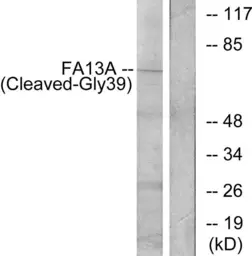Factor XIIIa (cleaved Gly39) antibody
Cat. No. GTX86889
Cat. No. GTX86889
-
HostRabbit
-
ClonalityPolyclonal
-
IsotypeIgG
-
ApplicationsWB
-
ReactivityHuman
